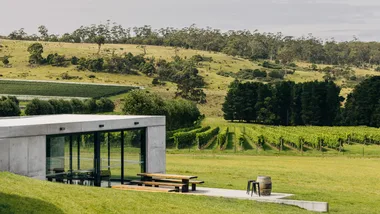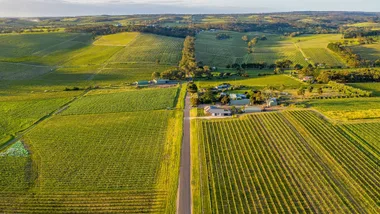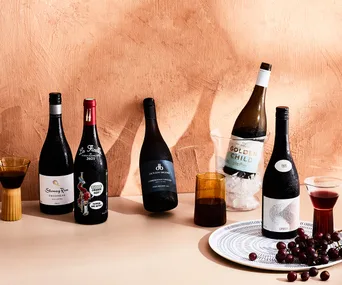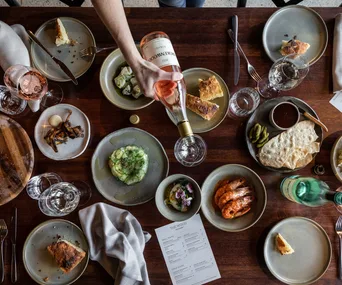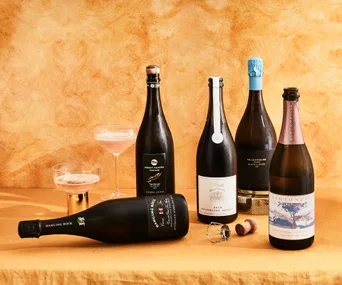Mezcal – tequila’s smokier, more mysterious cousin – has become something of an obsession for the crew behind Tio’s Cerveceria in Sydney’s Surry Hills. Owners Alex Dowd and Jeremy Blackmore and their general manager Alex “Happy” Gilmour travel to Mexico regularly to meet with producers, visit agave farmers and taste different varieties of mezcal to bring back to Australia. Whereas tequila production is a fairly modernised industry, mezcal has been relatively untouched by standardisation, leading to a drink with much variation and plenty of interest for the drinker.
Seeing as March is the month Tio’s goes all out on mezcal-related events, we asked Alex Dowd to take us through the ins and outs of this defiantly rustic spirit.
For the uninformed, how do mezcal and tequila differ in taste?
Both tequila and mezcal are made from agave, but the major difference between how each spirit tastes has to do with how the agave is roasted before it’s left to ferment.
For tequila, the agave is cooked with steam, usually in a brick oven or large pressure cooker called an autoclave. This process takes anywhere from 6 hours in an autoclave to 24 hours in a brick oven.
Mezcal, on the other hand, is traditionally cooked in wood-fired pit ovens, similar to the hangi method of cooking in Maori culture, which why mezcal has a distinctive smoky flavour, whereas tequila does not.
There’s also a lot more variation in how mezcal is made; compared to most tequila, it’s a far less industrialised process, which means a much wider spectrum of flavour.

Clay-pot stills being used to distil mezcal in Mexico
So, how is mezcal made then?
Making mezcal is a process that, in some areas, has changed little since the mid-1500s (or perhaps earlier). There are five core steps, but much variation in how these are carried out from distillery to distillery.
1. Harvest – Mezcal can be made from many different varieties of agave (and there are 300 odd out there, with 130 or so endemic to Mexico), but espadín is the one that’s used most widely. Agaves found in the wild, without any cultivation or interference, are called silvestre.
2. Cook – The mezcaleros (the name given to distillers of mezcal) have large pits where they build timber fires, which are covered with rocks once the fire has turned to coals. The agave piñas (or hearts) are stacked around these rocks, covered with hessian or leaves and then backfilled with earth before being left to roast underground for up to a week.
3. Crush – To extract the juice from the piñas that will then be fermented into alcohol, mezcaleros can use a variety of methods, from the fairly labour-intensive wooden mallet and canoe technique (which takes three days to make enough juice for 60 litres of mezcal according to Tio Rey, a mezcalero from Mezcal Vago) to the mechanised wood chipper.
4. Ferment – This represents one of the most hands-off stages of mezcal production. Most mezcaleros take the pressed agave juices and fibre (called bagasso) and throw it all in a wooden tank, uncovered, and allow a natural fermentation that often takes up to a month. Some distilleries have been known to use animal hides or rock-lined pits for fermentation.
5. Distil – Fire is used to heat the stills which, in artisanal or ancestral production, are made from clay, wood or copper, but never stainless steel. In the age of commercial distillation, the thought of a wooden still or clay pot is outrageous, but mezcal is a process that’s almost untouched by modernity. In the most basic palenques, there are no thermometers used to measure the heat of the distillate; the mezcaleros judge the temperature by the strength of the stream of distillate coming off the still.
As a general rule, mezcal is distilled twice and, legally, should be somewhere between 36 and 55% ABV. Most mezcal purists, and the mezcaleros themselves, feel as though anything under 45% ABV isn’t expressive enough. (Alcohol carries flavour, so having that bit of extra alcohol really opens up on the palate.)

Tio’s Barrio Breakfast, a mix of Estancia raicilla, tepache and amaro
How should we be drinking mezcal – neat, in cocktails, with salt and lime?
We’re not really ones to tell anybody what to do with their lives. However, mezcal is an extremely versatile spirit. There are some mezcals made with estate-grown espadín agave on the market now that work really well in cocktails. Our two favourite drinks are probably a Mezcal Sour, which we boost with maraschino liqueur and lemon and lime juice, or a Mezcal Sazerac, a mix of mezcal, añejo tequila, absinthe and bitters.
However, we mostly drink mezcal neat. At Tio’s, we serve it with a jerky of pineapple core, because the flavour, smell and texture remind us of the cooked agave you see in Mexico. Whenever we’re serving anything that’s wild or super unique, we want people to enjoy it as much as possible, because the fear is that one day they won’t exist.
Hang on, won’t exist? Why would mezcal not be around in the future?
Agave as a raw material is completely unlike almost any other spirit base in that it’s not an annual or biannual crop. Agave plants, like us, have only one life. Once you harvest them, they’re gone. It also takes a minimum of eight years for the piña to mature to a point where it can be used to make alcohol. When prices are high there’s often a rush of farmers to plant, which creates a glut eight years later. It’s a real boom and bust cycle.
While the plant is maturing (sometimes for over 20 years), they’re absorbing terroir, rain, humidity and everything in the microclimate. Mezcal is an expensive and labourious thing to make and that’s reflected in the price (which can be $25 or $30 for a glass).

Canoe and mallet used for crushing the piñas
Where did you first try mezcal and do you remember your first impressions?
The first mezcal Alex, Jeremy and I really got into drinking was Monte Albán – it’s amber in colour and it definitely gives you a headache. Once we drank the whole bottle with Jake [Smyth] and Kenny [Graham] from Mary’s and then smashed it against the wall. It was truly fucked.
Since then, our relationship with mezcal has changed a lot. We started seeing better products coming into Australia, largely led by the arrival of Del Maguey. Now, we get some amazing artisanal and ancestral juice here.
We also got older and fell in love with mezcal as a product. Now, we have as much mezcal at Tio’s as tequila. We’ll get anyone we can to bring us a bottle back from Mexico, we bring things in directly ourselves from Mexico and the US and we go on a pilgrimage to Mexico every year.

A Native Plum Margarita at Tio’s, made with Alipús San Baltazar mezcal, Davidson plum, lime and eucalyptus.
What got you obsessed with mezcal?
In a lot of ways, it’s spirit in its purest essence. It felt really elemental and tangible in a way that a lot of modern spirits don’t. That’s all science whereas mezcal is like alchemy. A lot of times you don’t know what you’re going to get. And it wasn’t being made in a contrived or marketed way. Suddenly we were buying booze that people weren’t designing to sell to us.
It also feels like a liquid expression of Mexican culture. A lot of varieties of mezcal offer us a chance to travel not only to another place, but also another time.
Why should I drink mezcal over tequila (or is that a silly question)?
It’s horses for courses really. Mezcal is big, bold and expressive. It’s unique and very often one of a kind. If you feel like being explorative, mezcal is definitely the ticket.
I want to drink mezcal at home. What should I look for when buying a bottle?
Look for any product that says ‘Artisanal’ or ‘Ancestral’ and anything with an ABV over 40%. The biggest, commercially available product that is in major bottle shops now is Del Maguey. It’s actually a super legit product that paved the way for mezcal as an international spirit. It’ll set you back about $100 a bottle.
Do you like to drink mezcal with food? What are some winning combinations?
Seafood is a big one, particularly raw dishes. Anything with healthy acidity will pair well with mezcal. Thai cuisine is also a good one.
How much mezcal is too much?
I don’t think we’re the right people to answer this question.
Alex Dowd opened Tio’s Cerveceria in 2011 and has been behind the stick ever since, as well as opening Darlinghurst nightspot The Cliff Dive in 2013. Prior to that, he worked at Shady Pines Saloon and Sticky Bar.

